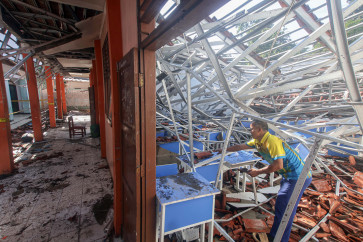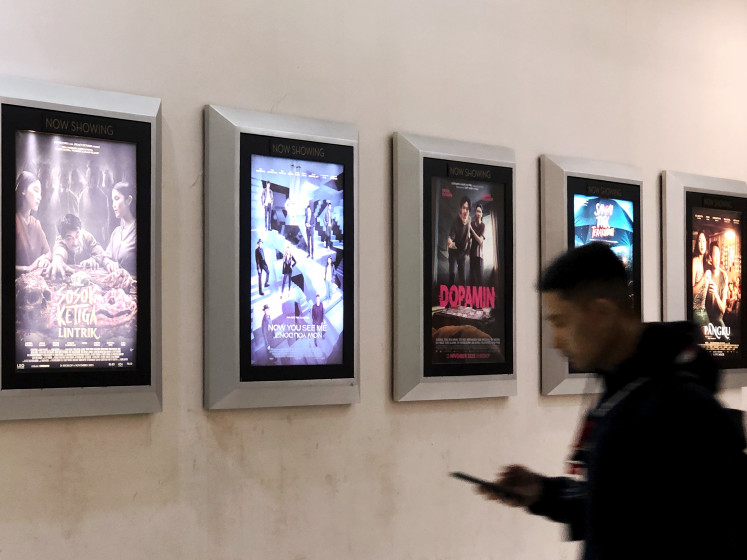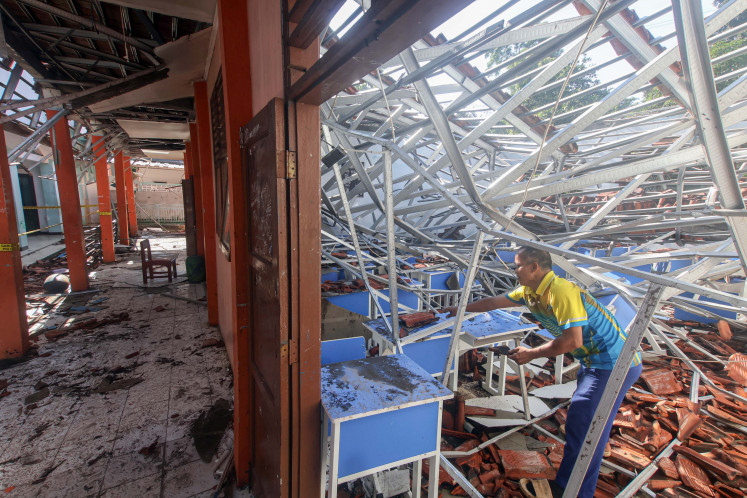Popular Reads
Top Results
Can't find what you're looking for?
View all search resultsPopular Reads
Top Results
Can't find what you're looking for?
View all search resultsIntegrate biodiversity values into 2015 development goals
Endang Sukara, deputy chairman for life and sciences at the Indonesian Institute of Sciences (LIPI), spoke to The Jakarta Post recently on the state of biodiversity and conservation efforts in Indonesia
Change text size
Gift Premium Articles
to Anyone
E
ndang Sukara, deputy chairman for life and sciences at the Indonesian Institute of Sciences (LIPI), spoke to The Jakarta Post recently on the state of biodiversity and conservation efforts in Indonesia. Prof. Endang is also the chairman of the Indonesian National Commission of Man and Biosphere for the United Nations Educational Scientific and Cultural Organization. He received Indonesia’s Highest Medal of Honor, the “Bintang Jasa Pratama”, from President Susilo Bambang Yudhoyono in 2008. Here are some excerpts from the interview:
Question: Can you tell us more about biodiversity in Indonesia?
Answer: Indonesia is one of the few countries in the world that can claim to be host to such tremendous biodiversity. But unfortunately, we’re also a country with one of the fastest rates of ecological destruction.
For instance, data in the 1930s showed that there were more than 90 local species of freshwater fish documented in the Cisadane and Ciliwung rivers in West Java, but the number has decreased exponentially since then. While conducting recent research, our scientists found there were only eight species of freshwater fish there, and some were non-endemic to the rivers, such as plecos fish, locally known as ikan sapu-sapu. This means around 96 percent of the freshwater species in those two rivers are gone.
The International Union for Conservation of Nature has compiled a “red list” that classifies the world’s endangered and threatened species. In Indonesia. Agarwood plants, locally known as gaharu, have high economic value, but are threatened with extinction because of irresponsible forestry management and rampant exploitation. Gaharu is a highly coveted export commodity in the Middle East, where its valuable resin is used in the perfumery industry.
What does this mean to our environment, and to human existence?
This means that awareness of the importance of conservation is still extremely low in our society, and this doesn’t only include the value we place on current potentials, but also on the future value of our biodiversity. We only gradually feel the impact of lost biodiversity, but by the time we realize what is gone it is already past the point of no return.
We cannot recover what we have lost, no matter how advanced our technology may become in the future. And even if we could, the recovery process would probably take millions of years to return to where we were. Therefore, it is important to note that catastrophic loss of biodiversity is not the same as an economic or political collapse, from which their could be hope for recovery.
Biodiversity conservation is vital to the very existence of humankind in its potential to secure food, medicine, energy, and employment. For example, the World Health Organization (WHO) and the Food and Agricultural Organization (FAO) have recommended 16 crops, including wheat, rice, cereals, cassava, potatoes, taro and millet on their staple depository list.
However, I think we need more exploration, because humans don’t necessarily have to depend on these commodities. I believe we have more options in terms of biodiversity, and coupled with our ever-evolving technological advancements we have the capacity to expand our existence in ways that we could have never imagined before.
What should we do to achieve this?
First, we need to continue conservation efforts, and that is non-negotiable. Second, I think we need to keep improving science and technology, both of which are important to tapping our biodiversity potential. But this is not enough. We also need strategic cooperation, especially among scientists throughout the world, as well as general capacity building in Indonesia. Third, we need to integrate the value of Indonesian biodiversity into our growth, poverty eradication, job creation, and green economy development targets, while at the same time continuing to address global climate change and the 2015 Millennium Development Goals. (tsy)










